Analysis of IPv4 soft landing in AFRINIC service region
By Adeola Alain P. AINA
30 August 2023
In may 2022, I wrote a note on what I called "Afrinic service region IPv4 conundrum". It discusses how Afrinic has been managing its remaining IPv4 and especially the effect of the implementation of the softlanding policy.
In this note, I present some analysis on the distribution of IPv4 in softlanding phase 2 based on indicators from unique prefix statistics from year-2019 to year-2022. It covers how it ended in phase 1 and it is ongoing in phase 2.
With the exhaustion of IPv4, have we succeeded in guaranteeing IPv4 to those who need them to maintain IPv4 networks, while deploying IPv6 networks?
reminder AFRINIC entered phase 1 of the softlanding on 31th March 2017 and in phase 2 from 13th January 2020. In phase 2, the minimum for both allocation and assignment is of /24 and the maximum is of /22. No limit on number of requests from a member and the allocation/assignment period is of 8 months (instead of 12 months). /reminder
Below is the total unique IPv4 prefixes per year.
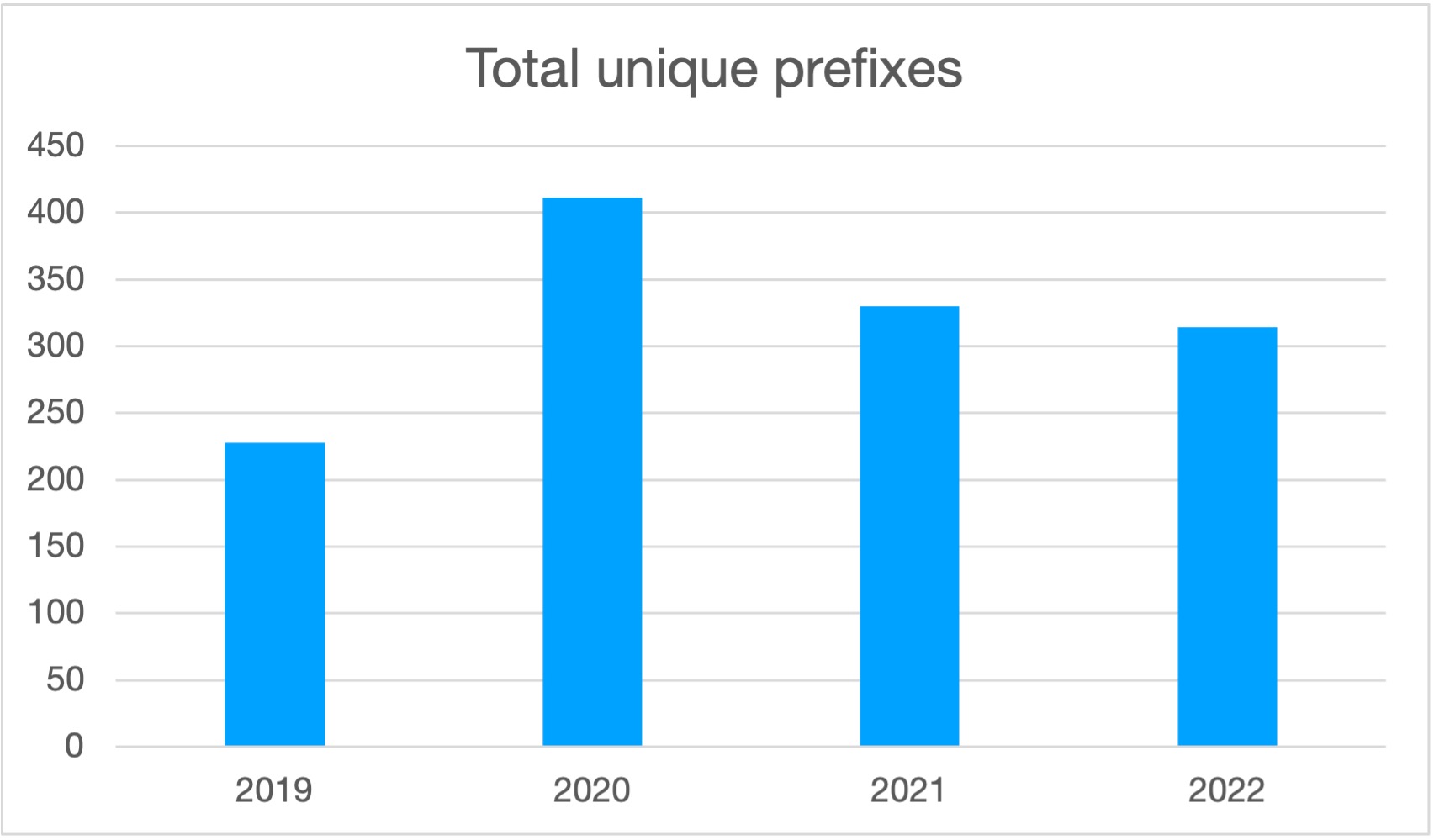
Fig1: Unique IPv4 prefixes over years
Year 2020 shows a higher rate. The data shows that 177 unique prefixes forming a total of 501,760 /32 IPv4 addresses were allocated to an existing member on 28, February 2020. These allocations tend to be from approved requests in phase 1.
The 1st indicator is "new member" vs "old member". "New member" means organisation without any other prior ressources from AFRINIC before an IPv4 prefix was allocated/assigned.
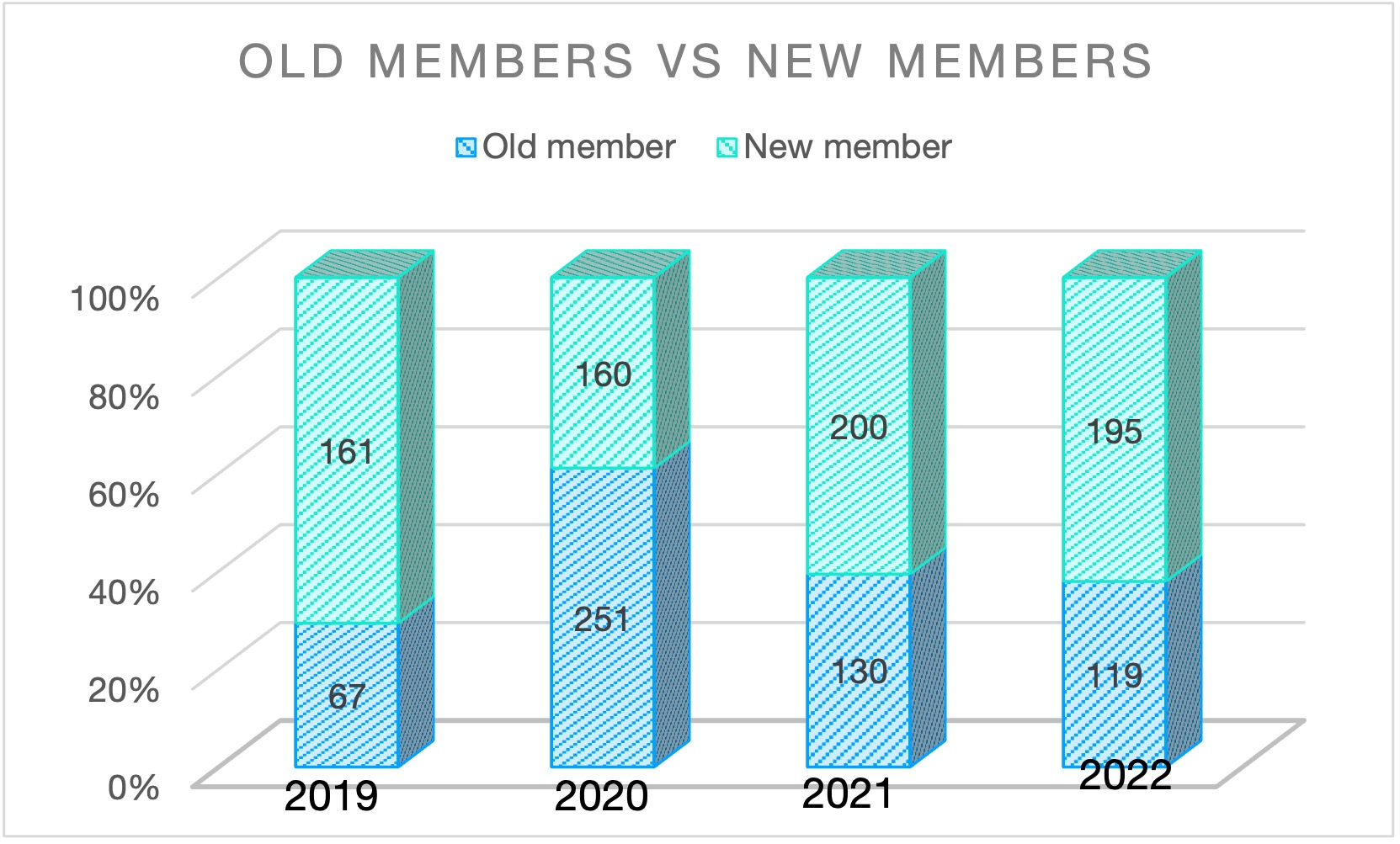
Fig2: New vs Old members unique IPv4 prefixes over years
If we take out the allocations to the old member mentionned above in 2020, there were more distribution to new members.
The next indicator is "allocations" vs "assignments". IPv4 to LIRs surpasses IPv4 to end-users. Number of assignments remain steady over years, with an average of 58.
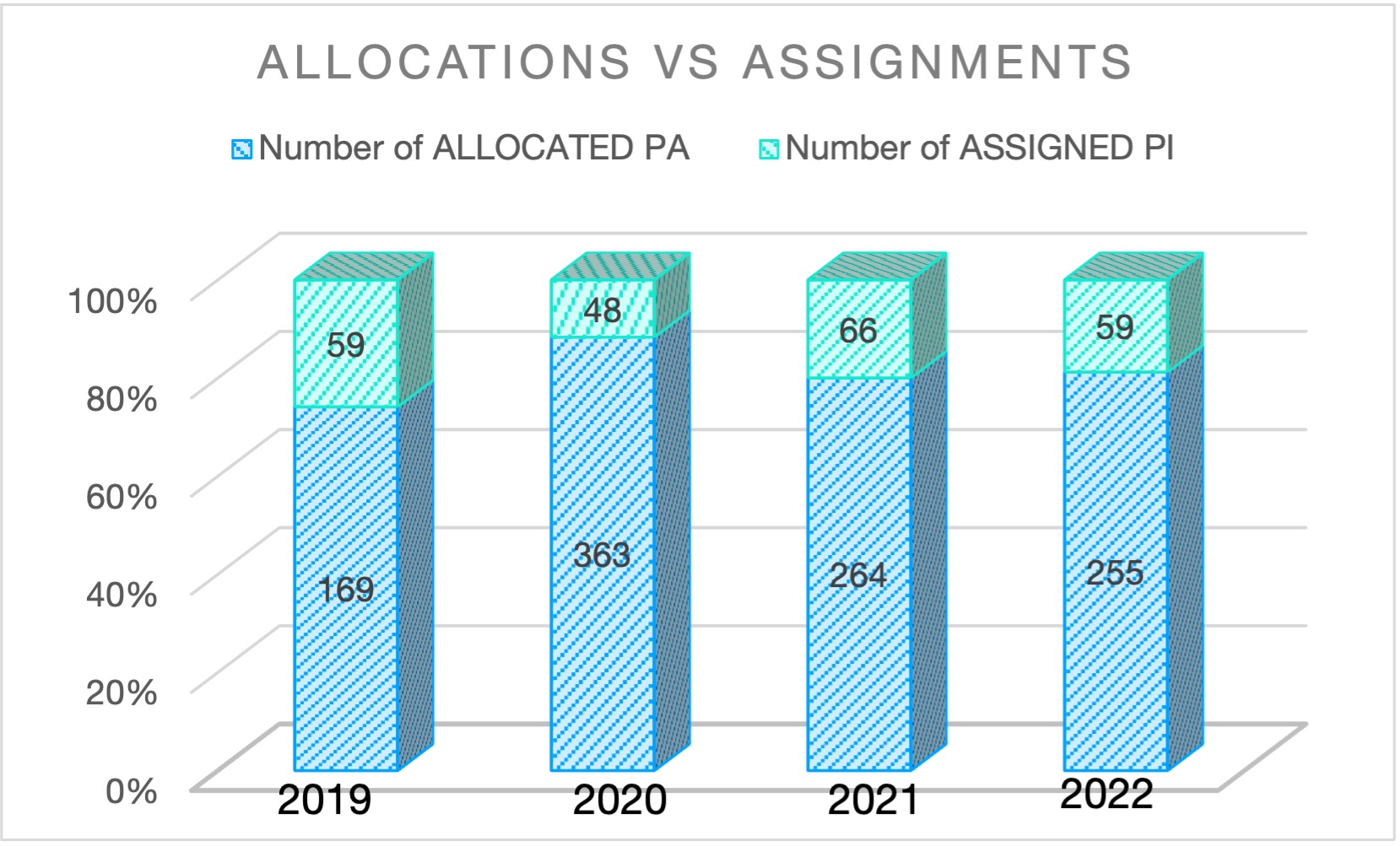
Fig3: Allocation vs assignment unique IPv4 prefixes over years
The third indicator is the distribution per country. Combining distribution for the last two years (2021 and 2022), a count of countries with at least one(01) allocation/assignment in 2021 or 2022 and number of prefixes per represented countries shows the followings:
- From the fifty-six (56) countries served by AFRINIC, only six (06) did not record an IPv4 prefix from AFRINIC. These countries are: CF, KM, GA, ER, YT, ST.
- Countries like SS, SO, LY among others shown active participation .
- In terms of number of prefixes per country, ZA is far ahead. The Top 10 is: ZA, KE, NG, AO, TZ, UG, GH, EG, LY, CM. Five (05) of these countries appear on the list of the Top 10 in terms of total IPv4 address space, which are : ZA, EG, MU, MA, SC, TN, KE, DZ, NG, GH.
.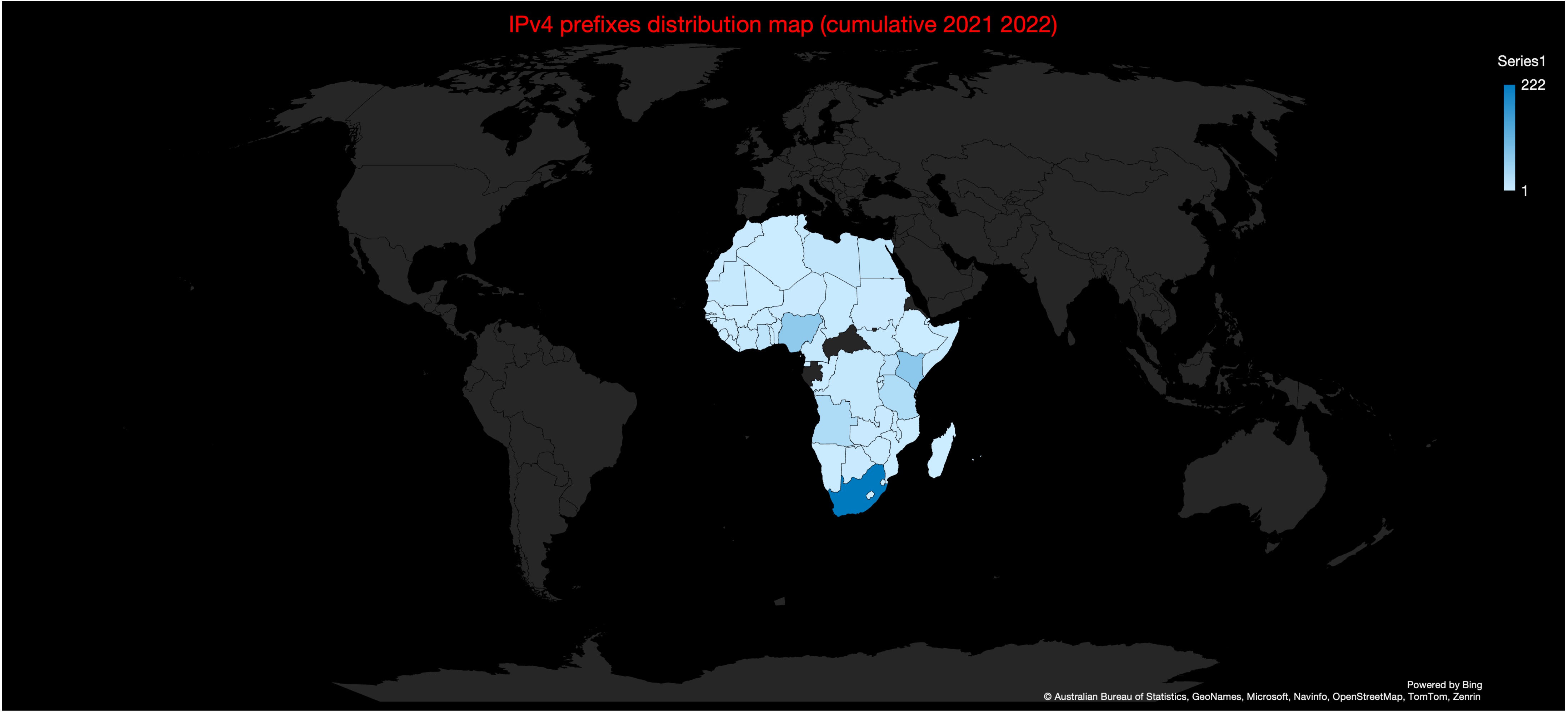
Fig4: Map of IPv4 prefixes per country
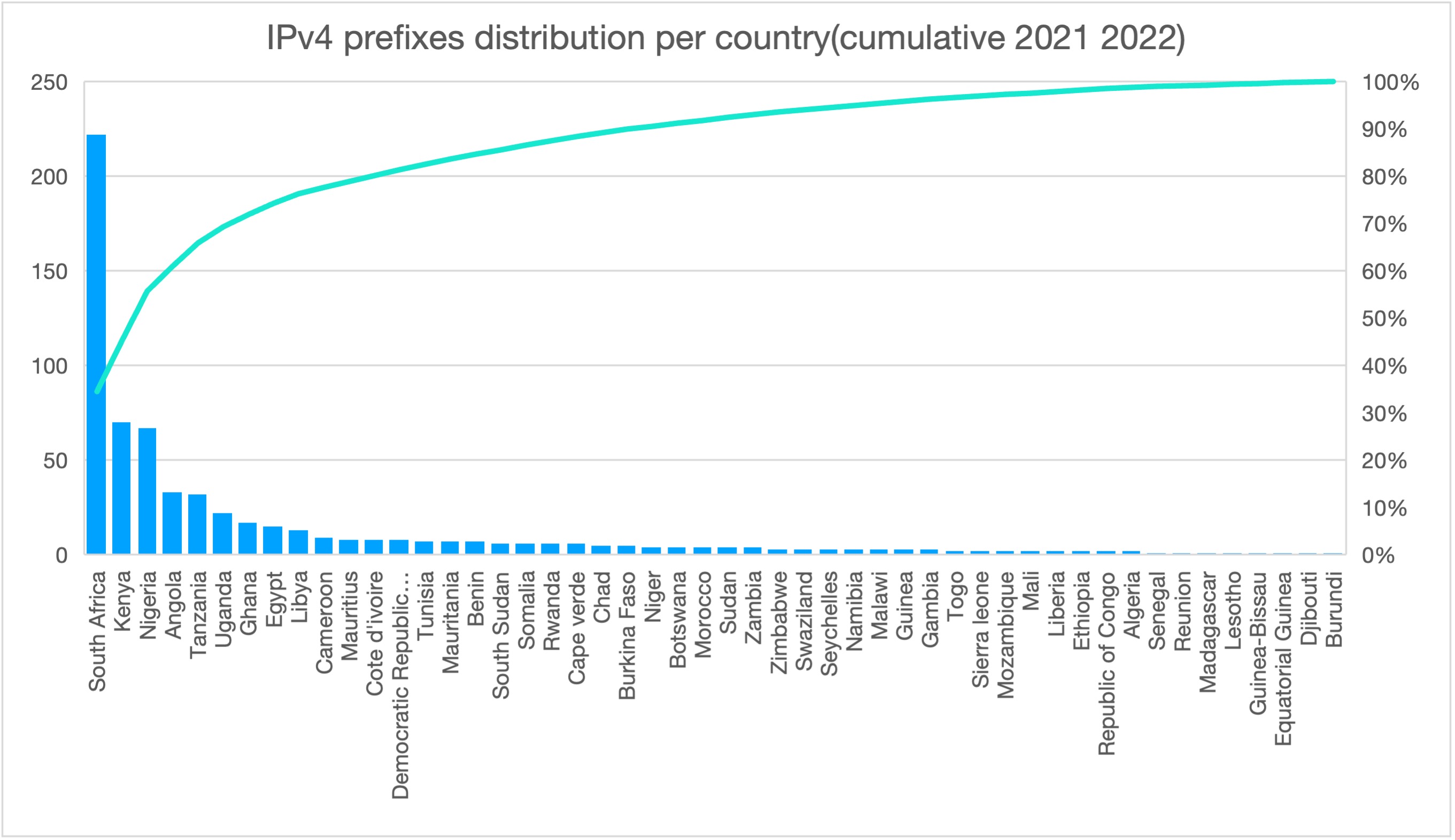
Fig5: IPv4 prefixes per country
The fourth indicator is the routing status of the prefixes (full or partial) as to assess their utilisation. At the end of July 2023, very few of the prefixes were "not routed". Allocations are still need-based and subsequent request requires justification of usage of 90% of previous allocations.
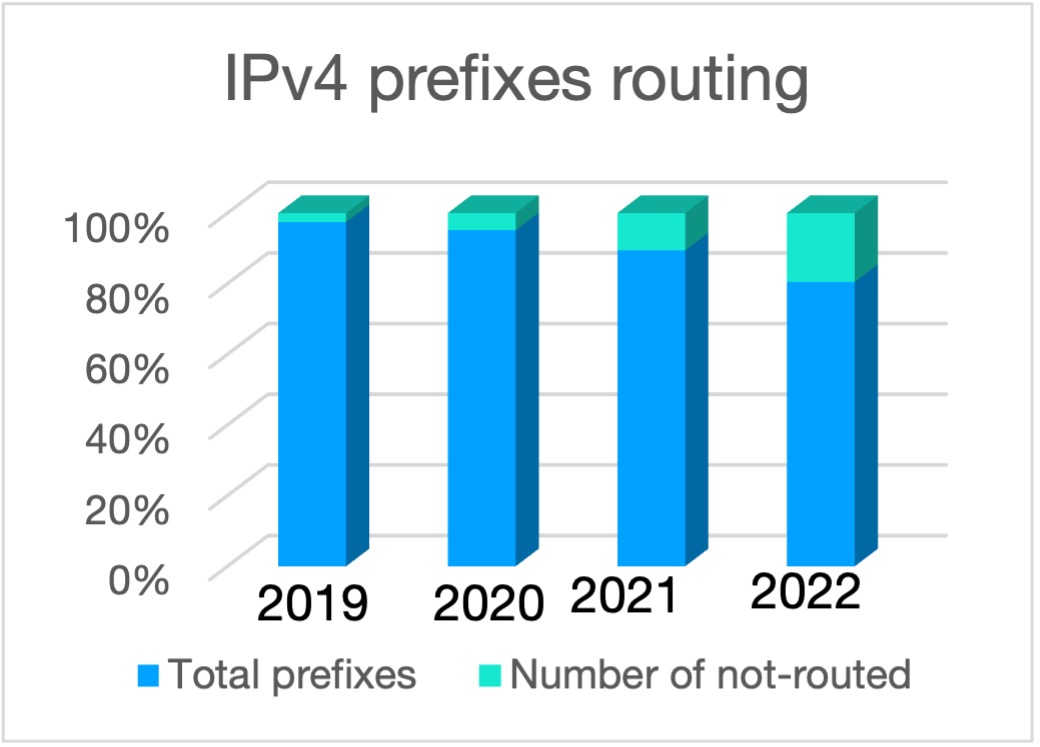
Fig6: Routing status of the IPv4 prefixes
New type of membership
With the change of the minimum allocation size from /22 to /24 in the phase2, new categories of LIRs exist:
Micro: ' /24' - <'/23' [ 256 - 511 IPs]
Mini: ' /23 ' - <'/22' [ 512 - 1023 IPs]
At the end of July 2023, eighty-eight (88) micro LIRs and sixty-seven (67) mini LIRs were recorded. It is probable that the reduction of the allocation period to eight(08) months justifies the size of these new requests. Otherwise and before the phase 2 of the softlanding, these organisations would'nt have qualified for allocations from AFRINIC. As downstream providers, they should have received sub-allocations or assignments from upstreams.
According to section 5.5.1.5 of the policy manual, the minimum sub-allocation size is of /24. As a consequence, some of these LIRs would not quailfy to make sub-allocations. Is it desirable to allow micro or mini LIRs to make sub-allocations ?
Conclusion,IPv4 registration services at AFRINIC is active, the membership still growing with majority of LIRs from all over the region, including countries with large number of IPv4 addresses. It would have been good to discuss these indicators at one AFRINIC meeting and decide the way forward policy-wise.
When finalising this note, AFRINIC IPv4 exhaustion page indicates:
"We have 1,276,416 available /32 left to hit total exhaustion."
References: https://afrinic.net/exhaustion
https://stats.afrinic.net https://stats.afrinic.net/ipv4/exhaustion/
https://www.afrinic.net/whois https://afrinic.net/policy/manual
https://stat.ripe.net/app/launchpad/